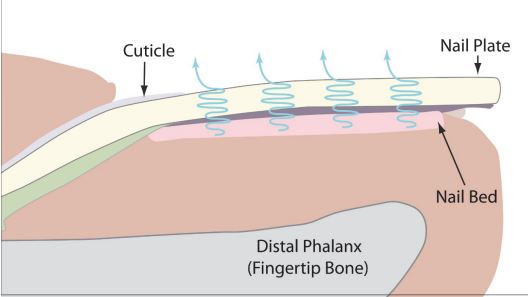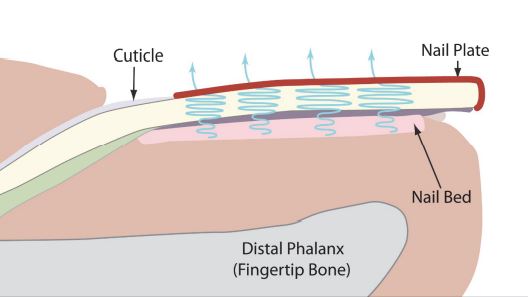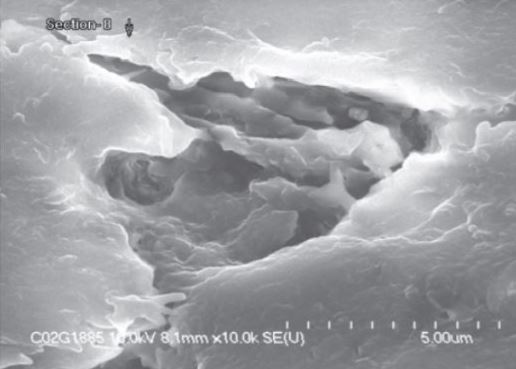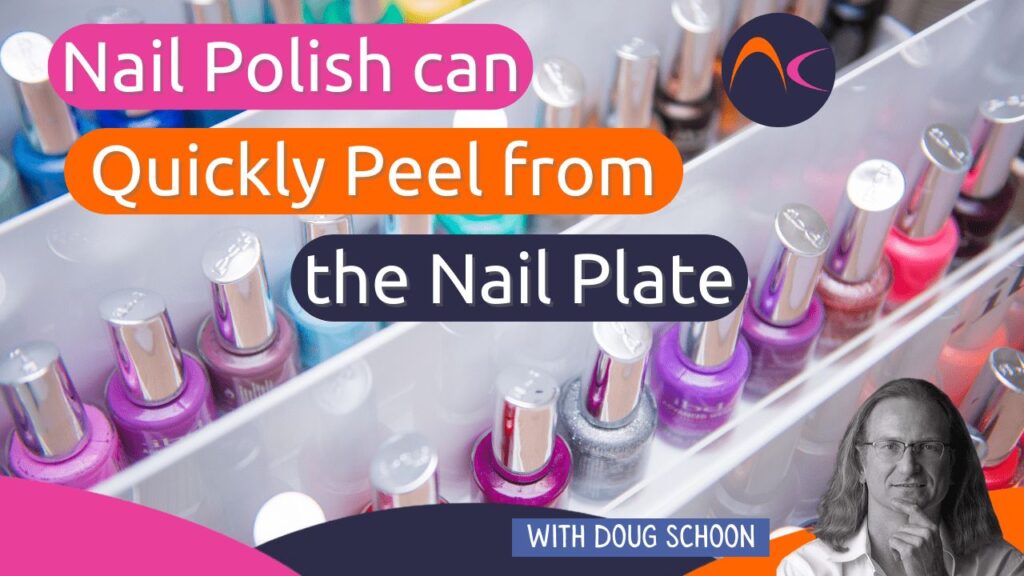Water passing through the nail plate
This image demonstrates how water moves though the nail plate.

The nail plate allows for high rates of transmission of water molecules. Water (aka moisture) migrates quickly through the plate, but as shown, the molecules don’t travel in a straight line. Instead, water molecules meander through the tiny (microscopic) channels that riddle the inside of a nail plate. This results in the plate containing about 15% water content, for a normal nail. Nail polish can slow the movement of water, but it doesn’t completely stop its slow and steady migration toward the surface.
Nail polish can slow the migration of water
This Image demonstrates how nail polish can slow this migration and raise the moisture content of the nail plate.

The increased amount of water in the nail plate increases the water pressure inside the plate. As water pressure builds up underneath nail polish, it creates a force that can push upward on the underside of the nail polish and cause it to peel away from the surface. Even though the water flow is relatively slow, the pressures that build up can become significant.
Here’s an easy way to visualize this. Imagine a water hose that is trickling very slowly. Holding a thumb over the nozzle will initially block the flow, but this also causes water pressure to increase inside the hose. Eventually, the increased pressure will force the water inside the hose to squirt out between the thumb and nozzle. This happens inside the nail plate and the build-up of pressure can push or lift the nail polish from the surface to cause it to peel.
Microscopic passageway inside the nail plate
This Image shows a typical passageway inside the nail plate that allows the movement of water molecules. The width of this image is about one-fifth the diameter of a human hair.

Other separate passages allow oils to move through the nail plate, as well. However, it is expected there are more water passages than oil passages since larger amounts of water move through the plate at much faster rates than do natural oils. This passageway inside the nail plate is created at a junction where three nail cells meet, but don’t fit together perfectly, however other types exist, e.g. small spaces between two cells. Such passages allow water molecules to migrate through the nail plate.


